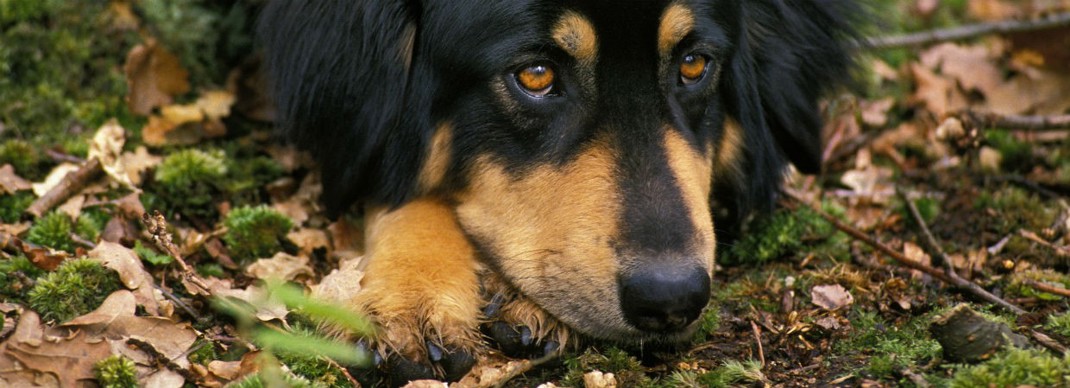How to Help a Nervous Dog

Some dogs get very nervous when out in public, and if this is the case for your pet, the key thing to remember is to be patient. You can help to manage feelings of anxiety in your dog, but you’ll need to take care not to overwhelm your pet.
Try to pinpoint what exactly is putting your pet on edge. It could be anything from traffic, people, other dogs, or something more specific, like children or mailmen. Learn to pick up on subtle changes in your pet’s body language and discern what’s triggering it.
According to Liz Clough, Dog Trainer, the first thing to do when your pet is nervous is to:
"Move away from the situation that is causing the dog to be uncomfortable and overwhelmed, to a distance where you can see the dog’s body language start to relax."
Next, try to ease the pet into feeling more and more comfortable with the perceived threat. You can do this with verbal encouragement and reward, “pairing a positive association (like a treat) to a stimulus”. However, don’t push your pet – always maintain enough distance from the source of discomfort so that the animal feels safe.
While you do want to be encouraging, it’s also important to keep the excitement level down, even when giving a reward. Maintain a calm, reassuring tone of voice and make sure to keep your own body language neutral – dogs are experts at picking up on how their owners feel, and if you’re nervous (even if only because you’re wary of your pet acting up) then this could feed into their own anxiety.
If your dog has trouble with strangers, you’ll need to learn how to say no. Though it can be hard to rebuff a friendly stranger wanting to give your dog a pat, as long as you let them know why, they shouldn’t take it the wrong way. And it’s not just the pet you’re protecting – a dog that feels threatened may act aggressively.
One way to avoid the need to verbally warn would-be approachers is with a visual aid.
Some stores, including online retailers, sell warning-type dog coats and collars in bright colours, with words like ‘nervous’ or ‘caution’ on them in large print.
New, unknown situations can make many dogs nervous, and even with repeated exposure, some never get over their fears. The best time to work on points of anxiety is in puppyhood, with socialisation and puppy schools.
The older the dog, the more ingrained these fears and behaviours become.
If your pooch displays mild discomfort when meeting new people or out in public spaces, these tips can help. However, if your dog is really struggling then it’s best to seek professional help from a qualified dog trainer. Liz recommends positive reinforcement training.
What about service dogs?
There is one kind of dog that should definitely not be engaged with – a service dog on the job. These canines are easily identifiable in their smart coats or vests (when the uniform goes on, the dog knows that it’s time to work).
While on the job, service dogs should not be distracted in any way – there should be no attempt to get the dog’s attention, whether by petting, talking to, or even trying to make eye contact. These pooches are doing important work, and need to be alert and focused on their handler at all times in order to keep them safe.


